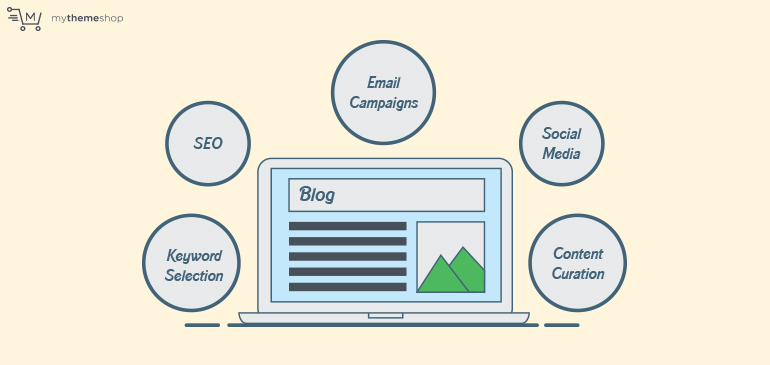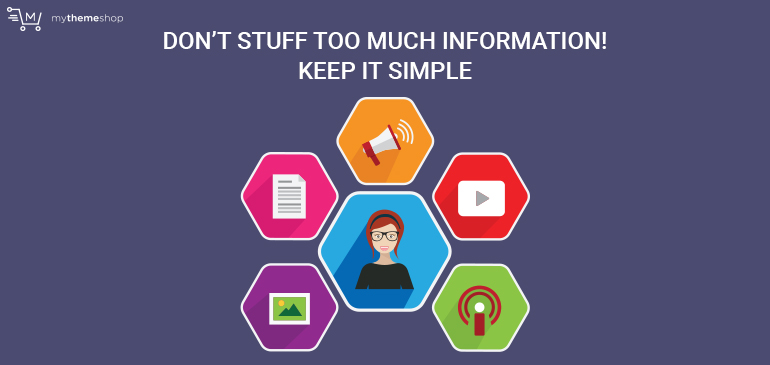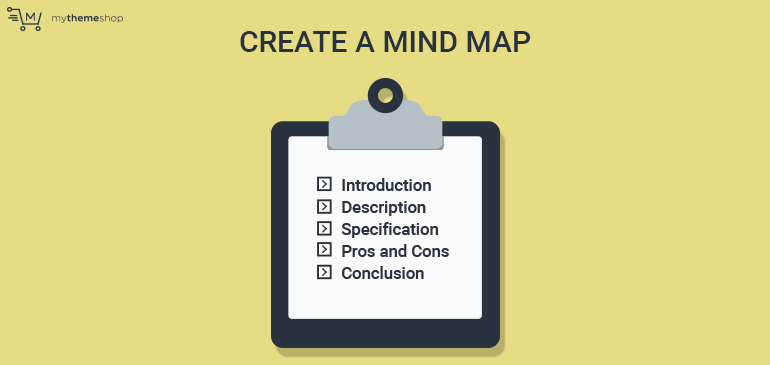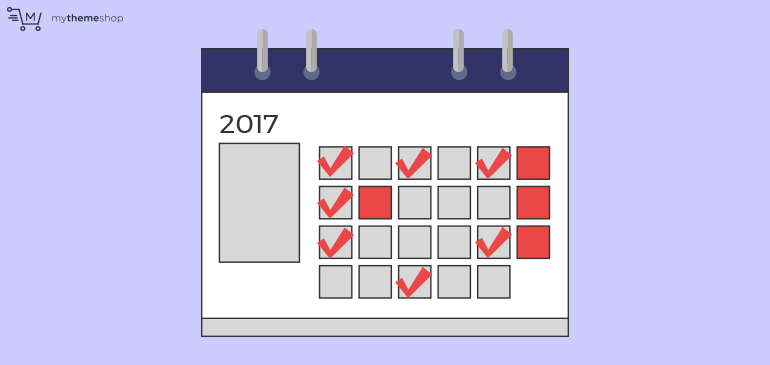
We never launch blogs with an aim to fail. Although some create blogs as just something you can do casually, most of us create blogs so that we can make money from them.
However, most blogs that launch never make it past the first year let alone the first few months.
One of the biggest reasons for this is that a blog owner often starts out with a lot of gumption, but then, after not seeing the money come in, they toss the project aside instead of really investing time and resources to make it a success.
In this post, I’ve compiled a list of some of the most common reasons behind blogs failing or not maximizing and ways to not let yours be next.
So here it goes.
1 Failing to Prepare

You can start a WordPress blog in about 15 minutes. This is probably why newbies often rush into starting their blog.
I mean, sure, it’s important to understand that getting a blog up and running is a very handy process technically and is something you should obviously do if you’re planning to make money from blogging.
However, this is only a part of the process and it’s shouldn’t be your first step either. There is a lot of research that you should do before hand, but many seldom take time to plan ahead before diving right in.
Soon they’re hit by the violent reality that creating a blog, establishing an audience, and posting consistently can be a very demanding task that requires time, energy, and money.
Do not let this be you.
Before you dive into the deep waters of the blogging world, I highly recommend Darren Rowse’s resources to plan blogs:
It doesn’t matter whether you’re about to launch your new blog or whether you’re within the tricky initial period, these books will walk you through some basic blogging exercises and help you lay the foundation of a successful blog.
Would you begin a business without planning? Perhaps not. If you’re planning on making money from your blog, then take your blog just as seriously as you would any other business venture.
2 Failing to Understand the Purpose

Some blogs only aim at customer retention. Such blogs are often updated with case-studies and contain stories that suggest all the possible uses of the products.
For instance, you can look at some of the blogs for email marketing software like MailChimp or Constant Contact.
Often times, these blogs are updated with stories of how some of their customers used their product and service to grow humongous email lists (another important factor of a good blog). Or how creative some of the email marketers can get when using their tools.
Gaining new customers is obviously one of their top goals. But retaining the existing customers is also an equally critical goal.
Such services come with recurring subscriptions. So, they have to continuously feed their customers with information that reinforces the abilities of their products.
And so, you’ll find their blog is geared towards this objective: keep old customers and get new ones.
As a blog owner, you have to understand the purpose of your blog. Is it customer retention (like the cited example), lead generation, affiliate income generation or something else?
Doing this will help you narrow in on goals that you plan to accomplish and allow you to draw up a road-map for how to get your blog off the ground floor.
3 Failing to Position in the Overall Marketing Plan

Most site owners abandon their blogs as they don’t really know what to expect out of it.
They simply create a blog for their site because they hear it’s a good idea, throw up some content and wait for the traffic to flow in only to find that they’ve seemingly wasted their time.
It’s important to understand that a blog is not just an add-on to your site.
You have to place it strategically in your inbound marketing plan. Once you do this, you’ll put in efforts that will bring about the desired results.
Otherwise, you’ll just end up blogging for the sake of blogging, and soon, you’ll lose both your inspiration and resources for running the blog.
Even if you’re not launching a blog for your business and you’re just creating a blog around a niche or keyword, this truth still rings true.
Blogging is all the rage these days and the idea of “Build it and they will come”, doesn’t apply. If you want to see your blog do well, then you need to learn more about inbound marketing and learn to implement it on your blog.
4 Failing to Choose the Right Content Type

If you look at several popular blogs around you, you’ll see that they sport different kinds of content. You’ll find text, images, audio and video and so on.
They add all these various types of ingredients to their blogs and their audience consumes each type of their content rather easily.
Many Blogging “Gurus” will swear by a certain type of content and urge others to do what they do in order to see similar results. This can convince you to follow their lead without even batting an eyelash.
Beware of doing this, though.
First, step back and first consider the purpose of your blog. What works for one well-known blogger will not always work for someone less known or with a different audience.
Try to find ways that will help you deliver the most relevant and engaging content quickly through your blog for your audience.
For example, if you’re a designer or a photographer, chances are that people want to immediately look at some of your work. You have to think like a potential visitor and understand what’s the first thing that you want to capture. Some excellent post ideas for your blog could be some timeline-based image case studies.
If you sell a complex product or tool, maybe video content will work great for you. Add several bite-sized video clips to your blog and follow the epic formula of “show not tell.” Make each video around a single product feature.
If you try to stuff in too much information, you might confuse your potential customers instead of convincing them. You can use the most effective of these on your Homepage. You can also reuse the same content in your documentation and emails.
People often find reading technical how-tos very painful. You don’t have to add them to your blog, go for visual content instead.
On the other hand, if you’re a niche-based resource, long and exhaustive roundups will perform really well for your audience.
So, understand the content type that will work best for you and plan your blog accordingly.
5 Failing to Establish the Persona of the Ideal Reader

Don’t write for the majority, write for that one reader.
You’ve probably come across this piece of advice before. However, less stress is laid on the step that precedes this.
Before you actually write to and address that one reader, you need to understand what this ideal reader is like. You need to collect specific information about his demographics. You will have to dig a little about his likes and dislikes. Information about his favorite Internet hangouts is also critical.
The information that I’m talking about can be easily achieved by creating user profiles (in our case, the reader’s profile).
Once you identify this reader, you can write in a way that appeals to him.
Identifying your reader can:
- Give direction to the blog in general
- Give shape to the content strategy
- Give a voice and tone to content-more about this in the following points
You can either create your user profiles using your traditional paper and pen. Just identify metrics that will best express your reader’s interests/demographics and you’re set.
Among apps, I absolutely love Personapp.
Personapp lets you do quite a few things: create unlimited projects and profiles, assign images, list information like demographics and miscellaneous fields. You can also export your profiles for quick reference.
It’s a quirky little app that I’ve grown to love.
There are 100s of other ways that you can do this. Use any one that you like, but don’t ignore this first critical step that can help your readers relate to your content.
If you can’t get your readers to feel that your content is tailor-made for them and to address their needs, you can’t be so sure that your blog will succeed.
6 Failing to Offer Unique Content

Most blogs often end up offering rehashed content to their readers. While this cannot technically be called copying, this still is a form of copying content.
You should always try to find novel ideas to cover on your blog.
I can understand that this can get very daunting and almost impossible these days while the Internet is exploding with content. But uniqueness is not always in the content that is offered. Often, uniqueness lies in the way that it’s offered.
With the Mobilegeddon Google update, nearly every blog was sharing the news. So, instead of writing a post about it, may be you could have gone on to create a gorgeous infographic. Or perhaps, you can create a podcast about being proactive about it and offering solutions.
Almost always, there are ways that you can avoid offering the same repetitive content. Most blogs don’t take the required effort.
7 Failing to Plan Content

If you’re reading till this point, I’m assuming that you’re confident that you’ve chosen the right content format and know your ideal readership well. Equipped with these 2 pointers, you can set out the perfect content plan.
Blogs are often unplanned, and so the content that gets posted also follows suit. You have to establish consistency across your content. Therefore, your content pieces should work in coherence and shouldn’t give an impression of disintegrated thought.
Whether you’re using text or videos, see if you can plan content series. Posts that follow a logical line of thought.
If your content is not planned well, your readers will feel lost and abandon your blog.
8 Failing to Stay Consistent

Once you’ve set a routine. Stick to it. There’s nothing that can damage your blog more than inconsistency. Again, I’ll refer to the first point in this post.
Since most blogs fail to plan and prepare, they fail to stay consistent. And no audience never really enjoys any piece of work that’s not in order — especially when it’s a blog that’s trying to woo customers or is trying to establish itself as an authority.
A good way to stay consistent through your blog is to create impeccable personas; write to each one of them in a vocabulary that they understand, and in a tone that they’ll expect.
Also, promote your content when these people can be expected to be online so that you can get the maximum exposure for your content.
One Example of a Critical Mistake with Consistency:
Let’s say that you sell a suite of business apps
Now, to stay consistent with your product, your blog should be written for business executives with a professional and balanced tone.
So words like chillax, awks and even LOL shouldn’t be used.
If your blog doesn’t function as a part of your business and Internet work-space, it’s bound to fail.
9 Failing to Define the Right Voice and Tone

Notice how I talk about vocabulary in the point above? It may seem like a small issue, but it’s really one that you should consider.
Blogs often fail to use the vocabulary of their intended audience.
This results in an emotional disconnect between the two. And while you may be writing relevant and fresh content to your readers, it’s still getting discounted for not matching up with the readers’ vocab.
A blog that discusses fashion and style has a particular voice. While one that discusses sports speaks differently. (It sounds odd, but your writing does carry a voice)
Different blogs communicate in different voices and that’s how they relate to entirely different and non-overlapping audience segments.
It’s important that you note your target audience and write using words that mean something to them. The easiest way to do this is to do extensive keyword research. This doesn’t just do organic SEO but also helps in retaining readers.
So, head straight to Google AdWords and pick the keyword planner tool.
Now feed your niche’s seed keywords. The resulting keywords are what your audience is using to find you. When you create content, try to drum up topics around these, using exactly the same keywords.
10 Failing to Respond to the Active Readership

Are you sure that you write back and respond to every comment that your posts receive? Or do you remember to thank people for sharing your content over the social media or for following your blog?
People who follow you or promote your content might still stay loyal to you. But there’s no good reason or inspiration for them to ask their friends and acquaintances to follow you. And why should they if you can’t thank them for doing what they do already.
This may come across as a really small step, but if you’ve just begun a new blog, you’ll only see the difference when you actually show your gratitude to the first few people who interact with you.
Businesses often maintain that the perfect purchase cycle is complete when an existing customer refers another. Apply the same logic to your blog. Get existing readers to refer more.
11 Failing to Go Social: Finding the Right Social Voice and Frequency

Even without knowing your target audience well, I can tell you right now that they probably love to spend hours browsing through their various social feeds. This is almost true about every Internet browser.
Social media drives a big chunk of traffic and conversions. And these 2 factors determine a blog’s success or failure. Even when this information seems so obvious, some blogs still don’t seem to leverage it.
Another thing that blogs often struggle with is their social media voice. Just like the voice your write in for your blog, you voice on social media can help or hinder conversion on your site.
There’s a quick fix for this essentially, you want to start actually promoting your blog’s content on social media. And if you’ve researched enough about your ideal reader and the keywords that he can use to reach you, you already have the recipe for the perfect social media post.
One main addition being the #hashtag before the keyword. Over time, this becomes your social media voice. It’s consistent with all 3, your product or brand, your potential audience as well as the search engines.
Another thing to keep in mind is the posting frequency and timings of your post. While the number of daily social posts is highly subjective, you set an amount you plan to post on your social feeds every day and plan them during times that you readers will be surfing online.
You can use a tool like Buffer or Klout to help you schedule your posts ahead of time.
12 Failing to Do Outreach

Google did penalize some shady guest blogging, but that doesn’t mean that you should avoid doing outreach for your blog.
This can be a bit difficult since so many blogs have stopped accepting and reaching out to other blogs for guest posting. However, a personalized warm email can do wonders.
It does help if you’re already an active member on the site and connect with the blog owner beforehand on social media in order to land a post with them (this will help them trust you). Show them that you respect their blog and that you can write great content by including links to what you’ve written.
Don’t forget to be cordial.
Google still uses backlinks to measure how well a site will rank and guest blogging is a great exercise that impacts a blog’s performance. There’s no good reason to be shy about them.
13 Failing to Build Email Lists

Online stores often make a profit only when a customer returns for several purchases and doesn’t abandon them after the first shopping session.
The product price obviously is a factor here, but mostly this is the underlying objective.
Just one-time buyers aren’t enough for most online portals as a huge amount of money is spent in advertising to attract new customers.
It’s critical for them to extend a happy experience, ensure a swift delivery and also seek permission to reach out to them with special offers.
If you look at your blog in the same light, you’ll see that readers who abandon your site in the first session don’t really offer much promise in terms of business. And this is every blog’s concern. An alarming percentage of your readers won’t return to your blog.
Unless, of course, you give them a shout.
Sending out email newsletters is a great way to ensure that readers keep returning to your blog. Blogs often commit the mistake of not building email lists. Or not doing all that they can to get a substantial one.
The easiest way to get an email is to offer a freebie. If you can’t offer a freebie right away, offer free consultation. Basically, give them an incentive to share their email with you in exchange for a perk.
14 Failing to Optimize

The best thing about blogging is that nothing’s really set in stone. You are allowed flexibility within reasonable limits. Yet, some blogs choose to go on following the exact same process. This never allows them to maximize on all the fronts available to them.
Even if they’ve found the winning formula, ways to improve are always present.
When you try out different versions, you discover what works and doesn’t work for your blog. Once you have information about what works, you can optimize it to work even better.
It might seem that trying new things can introduce inconsistency, but don’t fret about this. While this marginal risk does exist, you can still never really know what can improve without trying a different version.
Bonus:
Failing due to never launching:
I know this gets a bit far-fetched, but it isn’t as uncommon as you think. If you’ve been planning like, forever, to launch some a blog, then for heaven’s sake, go for it! This is a perfect time.
Wrapping it up
Most of us are running blogs and let’s face it, mistakes happen. I mean, we can’t possibly be right about everything all the time, right?
But there are always ways to bounce back and recover (almost fully) from all or most of these mistakes.
Have you been consciously/subconsciously doing any of these mistakes? What are some of the other critical mistakes that you’ve seen other blogs make? Do share some of them in the comments section below.




